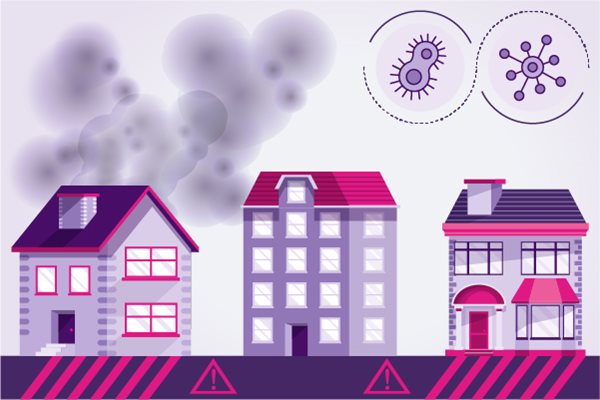
There are around 4.4 million social homes in England and, as a recent Government report highlighted, 3%-4% have notable damp and mould.
Doesn’t really sound a lot, does it?
But if you consider that it amounts to up to 176,000 homes, you have to admit that, actually, it is a lot.
And if you imagine walking down an average street of 100 social homes, wondering about the condition of each property behind the front door, the thought of three or four families struggling with damp and mould problems suddenly becomes more serious.
In February this year, the Government published its initial findings on the problems of damp and mould in social housing following the tragic death of Awaab Ishak in Rochdale in December 2020.
A coroner’s report said the two-year-old died from a respiratory condition caused by the effects of damp and mould in his home.
His father had reported the problem to Rochdale Boroughwide Housing on numerous occasions. But the issue was not resolved.
Coroner Joanne Kearsley asked this question: “How in the UK in 2020 does a two-year-old die as a result of exposure to mould?”
Potentially harmful
It was a case and a question that shocked public and politicians alike and the Government launched an investigation which led to the initial findings being published in that February report.
The report says: “While the picture is incomplete, our best estimate is that less than 0.2% of social homes have the most serious damp and mould problems, 1%-2% have serious damp and mould problems and a further 3%-4% have notable damp and mould.”
That means that 88,000 social homes have a serious problem with damp and mould and 8,800 have the most serious.
And it’s not just social housing that suffers from this risk to health, privately owned and rented homes are susceptible, too.
But why are homes in the UK so prone to potentially harmful damp and mould?
The first answer, according to those who claim to know, is the age of our housing stock. Britain has some of the oldest housing stock in Europe.
The second problem is poor build quality – either through inadequately fitted insulation or through lack of damp proofing.
All new build homes are constructed with damp proof cavity walls – but an insufficient number of homes have been built for decades and there is nowhere near enough new builds to keep up with demand.
The third reason damp and mould thrives in this country, is the weather. It rains a lot. But, according to the Environment Agency, it’s not just the amount of rain that causes damp problems, it is the severity. Due to climate change, we are now experiencing more extreme rainfall and it is that which can find its way through tiny holes and cracks in walls and windows and into the fabric of a house.
Promptly and effectively
Condensation is the main cause of damp. It occurs when warm, moist air hits a cold surface. That can happen through everyday activities like showering and cooking.
If a room isn’t well ventilated or regularly heated, moisture will impact cold surfaces and before long, black mould spots will begin to appear on walls, around sills, in corners, at the back of cupboards. And once mould has begun to take hold it can spread alarmingly quickly and become a risk to health.
The Government report says: “The vast majority of people living in social housing have homes that are largely free from damp and mould. However, living with damp and mould can have a serious impact on tenants’ health and wellbeing, and it is essential that providers identify and address these issues promptly and effectively.”
In conclusion, the report outlines the next steps the Government wish to take on the issue.
- They would like all registered social housing providers to make improvements to how they protect their tenants from potential harm from damp and mould.
- They will continue to carry out further analysis of submissions and intend to engage directly with individual providers reporting damp and mould, to assess how they are tackling it
- They intend to take appropriate regulatory action against providers who are not meeting the appropriate standards.
- They will introduce more active regulation of social housing from April 2024, including inspections of the quality of homes.
- They intend to take action where they find issues, to make sure tenants receive the help they deserve.
In addition to this action, the government has advised tenants to report any signs of damp and mould to landlords, and if they are not satisfied with the response they can take it directly to the Housing Ombudsman.